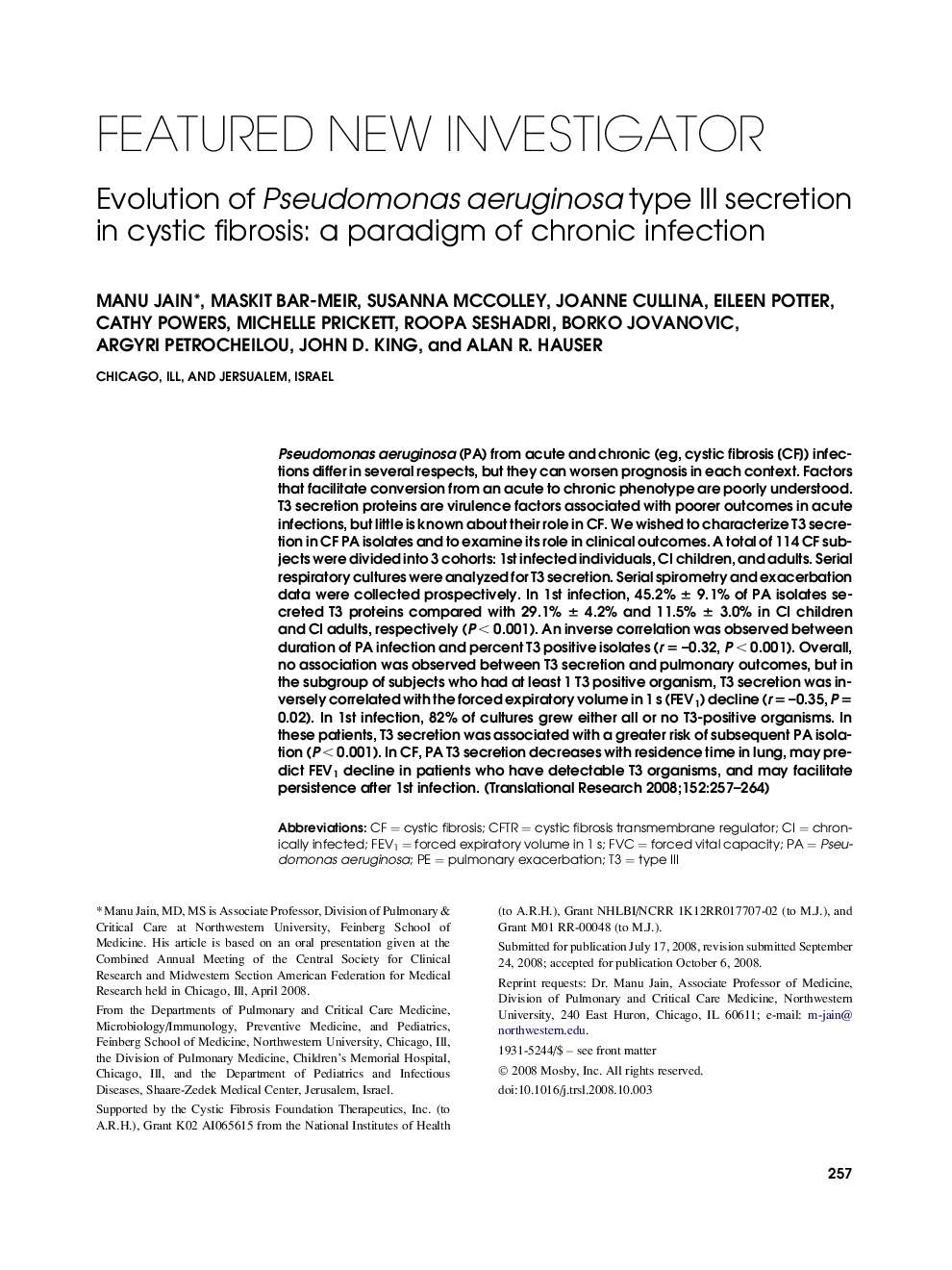| کد مقاله | کد نشریه | سال انتشار | مقاله انگلیسی | نسخه تمام متن |
|---|---|---|---|---|
| 3841222 | 1247966 | 2008 | 8 صفحه PDF | دانلود رایگان |

Pseudomonas aeruginosa (PA) from acute and chronic (eg, cystic fibrosis [CF]) infections differ in several respects, but they can worsen prognosis in each context. Factors that facilitate conversion from an acute to chronic phenotype are poorly understood. T3 secretion proteins are virulence factors associated with poorer outcomes in acute infections, but little is known about their role in CF. We wished to characterize T3 secretion in CF PA isolates and to examine its role in clinical outcomes. A total of 114 CF subjects were divided into 3 cohorts: 1st infected individuals, CI children, and adults. Serial respiratory cultures were analyzed for T3 secretion. Serial spirometry and exacerbation data were collected prospectively. In 1st infection, 45.2% ± 9.1% of PA isolates secreted T3 proteins compared with 29.1% ± 4.2% and 11.5% ± 3.0% in CI children and CI adults, respectively (P < 0.001). An inverse correlation was observed between duration of PA infection and percent T3 positive isolates (r = –0.32, P < 0.001). Overall, no association was observed between T3 secretion and pulmonary outcomes, but in the subgroup of subjects who had at least 1 T3 positive organism, T3 secretion was inversely correlated with the forced expiratory volume in 1 s (FEV1) decline (r = –0.35, P = 0.02). In 1st infection, 82% of cultures grew either all or no T3-positive organisms. In these patients, T3 secretion was associated with a greater risk of subsequent PA isolation (P < 0.001). In CF, PA T3 secretion decreases with residence time in lung, may predict FEV1 decline in patients who have detectable T3 organisms, and may facilitate persistence after 1st infection.
Journal: Translational Research - Volume 152, Issue 6, December 2008, Pages 257–264